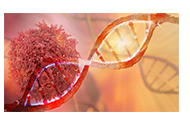Did you know that Indians have 1 in 10 chances of developing cancer in their lifetime? In fact, cancer is the second-leading cause of death in the world. It is time to gain fundamental knowledge about cancer. A better understanding this disease can empower you to take right call for both you and your loved ones.
Cancer is a disease wherein abnormal cells divide uncontrollably to permeate the body tissues. These abnormal cells often the ability to outspread themselves and propagate in different parts of the body. Also, it affects the normal functioning of tissues, organs, and parts to cause permanent damage in lungs, heart, kidney, nerves, reproductive system and, in other parts of the body.
Cancer affects the human body to the core. Under the body’s normal working condition, old cells die. But, in cancer, the old cells don’t die and instead form new, abnormal cells. These uncharacteristic cancer cells grow and divide out of control to form tumors. In the later stages, uncontrolled or untreated cancer may lead to the patient’s death.
Cancer is a complex disease with many possible causes. However, some of the common causes are:
There are 4 types of cancer. The types are differentiated based on where the cancer cells grow.
Carcinomas: This type of cancer begins on the skin or the tissue that covers the surface of internal organs. These usually form solid tumors. It is one of the most common type of cancer among patients. Examples include breast cancer, lung cancer and prostate cancer.
Sarcomas: In this type of cancer, the affected cells begin in the tissues that support and connect the body. Can you guess what keeps our body together? These are joints, blood vessels, cartilage, bone, nerves, muscles and fat. This type of cancer is rare and accounts to just 1% of the cancer types.
Leukemia’s: This type of cancer often begins in white blood cells. Over the time, it affects the bone marrow—a semi-solid tissue that creates platelets and RBC. The unbalanced number of white blood cells enter the bloodstream and start affecting it.
Lymphomas: Lymphomas occur when there is an unbalanced growth of white blood cells known as lymphocytes. The abnormal lymphocytes build up at different parts of body including armpits, neck and at organs of the lymphatic system.
Yes, cancer is an age-specific disease. The risk of cancer increases with age. Reports say that adults after 45 years need to be more careful. They should embrace a healthy lifestyle, go for preventive check-ups, and have good nutrition and sleep.

The symptoms in the body vary according to the type of cancer. But some of the common indications are:
Early diagnosis of cancer gives hope to better care and treatment. It enables both, the patient and the doctor to plan ahead and make important decisions pertaining to health, support and needs. Diagnosing the cancer chiefly involves 4 steps.
Physical examination: It is to look for abnormalities in the body such as change in skin colour or lumps.
Laboratory tests: It involves collection of urine and blood samples to identify any non-typical results.
Imaging tests: Imaging tests are performed to get a detailed picture of areas inside the body. CT scan, bone scan, PET, MRI are some of the commonly prescribed imaging tests.
Biopsy: Biopsy is the only way to definitively diagnose cancer in most of the cases. Doctors look at cell samples under microscope to study the changes.
The treatment of cancer depends on the stage of its advancement. Usually, a combination of different treatments is suggested. Some commonly known treatment methods include Surgery, Radiation Therapy, Chemotherapy, Immunotherapy, Stem Cell Transplantation, Targeted Therapy, Hormone Therapy and Precision Medicine.
The impact of cancer on body is significant. Understanding the disease on a prior basis can do a lot in preventing the last stage diagnosis. Being alert towards the symptoms is important. Seeing a healthcare provider when noticing the warning signs shouldn’t be a miss. Above all, embracing a healthy lifestyle prescribed by the doctor can help you go a long way